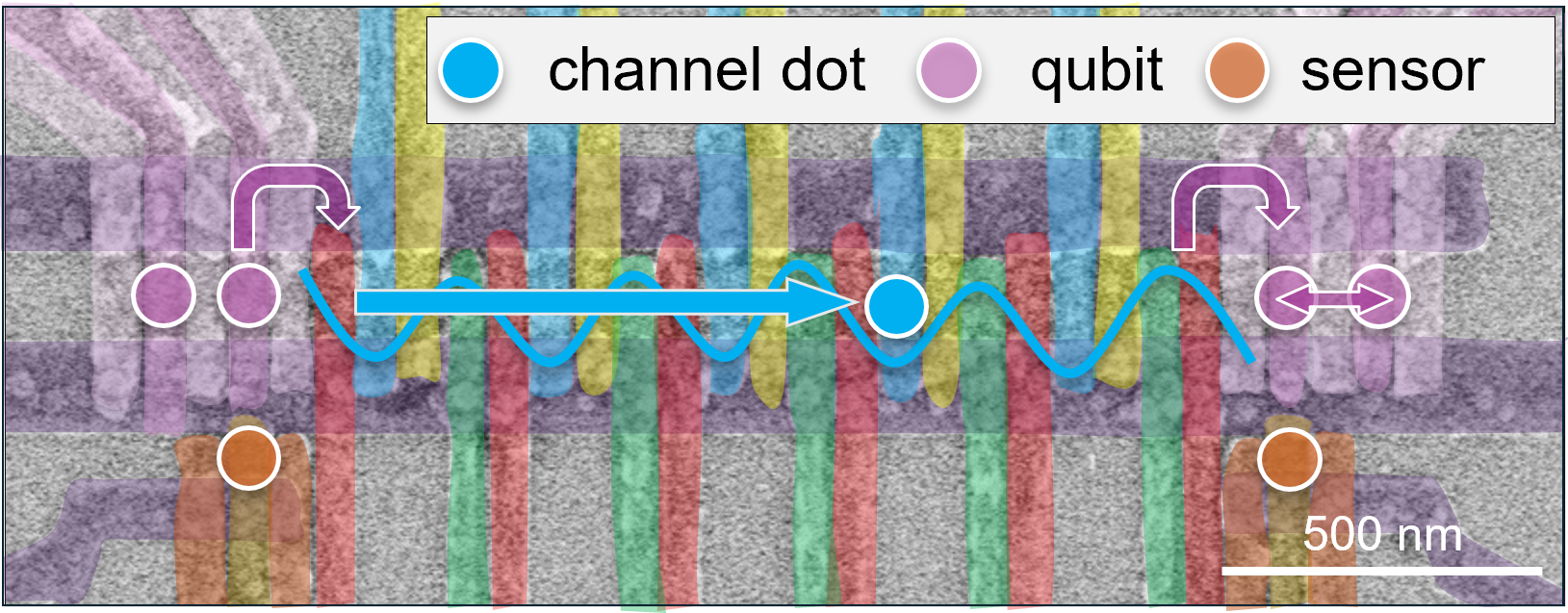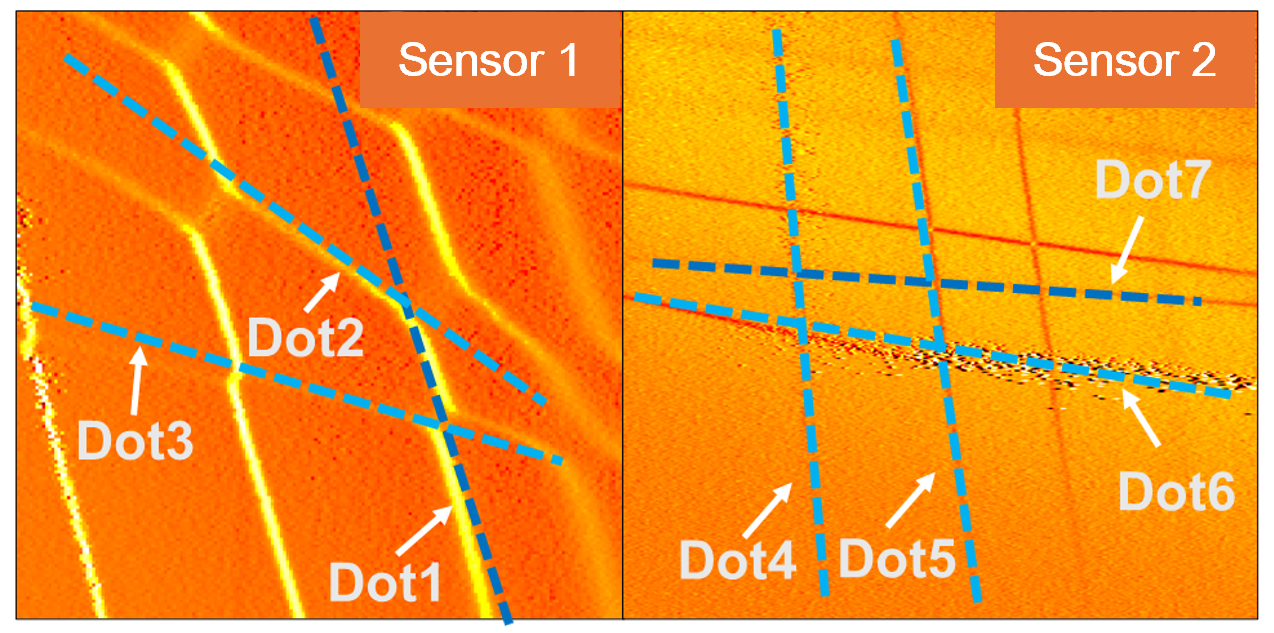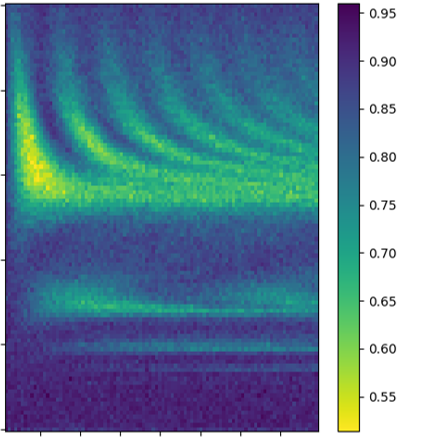Quantum Dot Array & Spin Interface
The quantum dot array group is focused on developing technologies to observe and control the interactions of electron transport and spin states in one-dimensional and two-dimensional quantum dot structures. Our goal is to establish techniques for coherently manipulating and transporting electron spins in the array.In these quantum dot arrays, we can explore the formation, detection, and application of quantum states, such as "spin shuttling" (transporting electrons while maintaining their spin states) and "multi-spin control" (interacting multiple spins). This research directly contributes to the development of "middle-range quantum interconnects," which are essential for next-generation quantum technologies such as fault-tolerant quantum computing and quantum communication.
Spin Shuttling: Transporting Electrons Between Quantum Dots While Preserving Quantum States
 This technique allows for the movement of individual electron spins between adjacent or remote quantum dots without losing the spin state. It enables transport of quantum bits (qubits) to different locations on a chip, facilitating control of computational operations and state measurements, thus enabling parallelization and scalability. To maintain spin coherence during transport, it is necessary to investigate the impact of finely designed electrode structures and environmental electric and magnetic field gradients.
This technique allows for the movement of individual electron spins between adjacent or remote quantum dots without losing the spin state. It enables transport of quantum bits (qubits) to different locations on a chip, facilitating control of computational operations and state measurements, thus enabling parallelization and scalability. To maintain spin coherence during transport, it is necessary to investigate the impact of finely designed electrode structures and environmental electric and magnetic field gradients.
Generation and Observation of Multi-Spin States: Controlling Interactions in Quantum Dot Arrays to Observe New Quantum States
 In quantum dot arrays with multiple charge or spin numbers, particles interact with each other to form complex quantum states. By designing and controlling these states, we can explore functions typically associated with molecular structures and study the dynamics of unique macroscopic quantum states that cannot be observed in single-particle systems. This requires the development of new techniques for both generating and reading out these states.
In quantum dot arrays with multiple charge or spin numbers, particles interact with each other to form complex quantum states. By designing and controlling these states, we can explore functions typically associated with molecular structures and study the dynamics of unique macroscopic quantum states that cannot be observed in single-particle systems. This requires the development of new techniques for both generating and reading out these states.
High-Precision Spin Measurement & Control Techniques: Enabling the Observation of Quantum States in Versatile Materials
 Coherent control and readout of spin states are strongly influenced by environmental noise, which lead to information losses. To perform operations and detect signals before this occurs is crucial. In situations where interactions within semiconductors may be detrimental, we manipulate the quantum states using such interaction utilizing the quantum dot array states and combining them with microwave spin control techniques. This enables high-speed control within the spin coherence time and the detection of compensatory corrections to adapt to environmental factors, aiming to enhance experimental accuracy and expand the applicability of these technologies.
Coherent control and readout of spin states are strongly influenced by environmental noise, which lead to information losses. To perform operations and detect signals before this occurs is crucial. In situations where interactions within semiconductors may be detrimental, we manipulate the quantum states using such interaction utilizing the quantum dot array states and combining them with microwave spin control techniques. This enables high-speed control within the spin coherence time and the detection of compensatory corrections to adapt to environmental factors, aiming to enhance experimental accuracy and expand the applicability of these technologies.